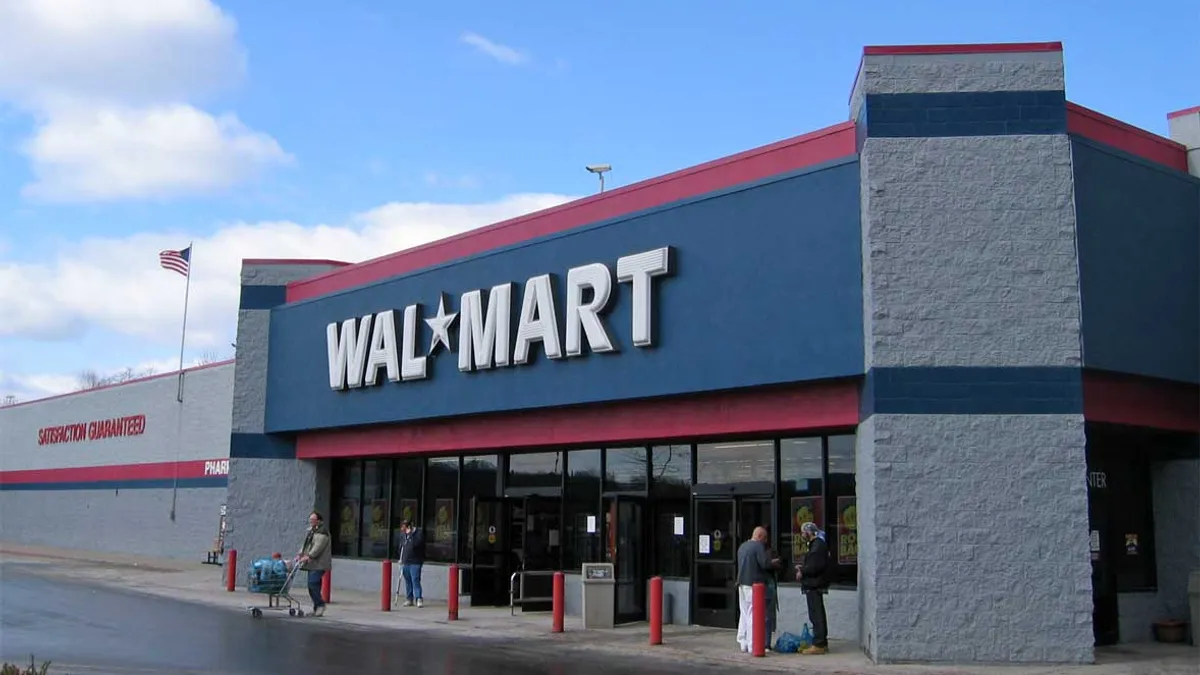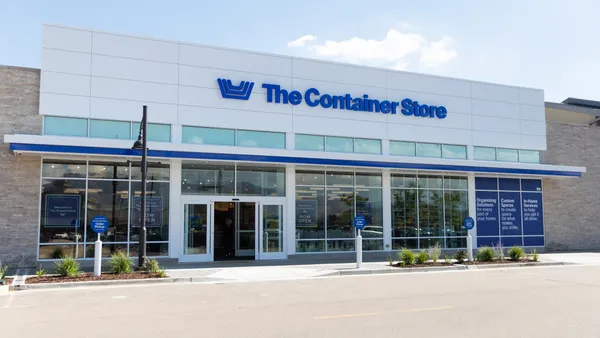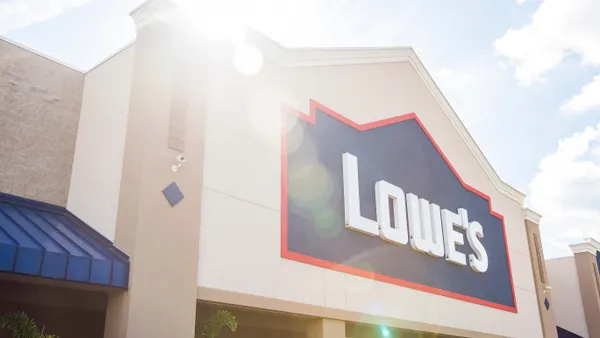Dive Brief:
-
At Walmart’s 47th Annual Shareholders’ Meeting on Friday, President and CEO Doug McMillon described a retailer that is adding speed and convenience to its “always low prices” mantra, and he asserted that the brick-and-mortar giant is transforming shopping.
-
With retail employment plummeting and technology poised to potentially wipe out millions more over the next decade, McMillon also urged the company’s 2.3 million worldwide associates to “be lifelong learners” and promised the company will aim to be “people-led and tech-empowered.”
-
Much of his keynote, as described in a company press release after the event, was dedicated to highlighting the retailer’s decision to expand its e-commerce capabilities. This includes policies like discounts for online orders picked up in stores, more in-store pickup and delivery opportunities for online orders, and an “endless aisle” of goods thanks to online ordering options in stores.
Dive Insight:
McMillon promised shareholders that Walmart is transforming retail, with a set of e-commerce-oriented and technology-driven programs that have already pumped up its e-commerce sales, which rose 63% in its most recent quarter alone.
Amazon was something of an elephant in the room, considering that many of the advancements that McMillon highlighted are old hat to the e-commerce giant. But, of course, Walmart has the one advantage that Amazon doesn’t: a vast physical footprint with 4,700 stores across the U.S. and more than a million associates. Amazon’s physical store strategy, by contrast, is still in its infancy.
“We’re going to make shopping with us faster, easier and more enjoyable,” he said, according to a statement from the address released by Walmart. “We’ll do more than just save customers money and you, our associates, will make the difference. Looking ahead, we will compete with technology, but win with people.”
While Amazon is famous for disrupting retail by undercutting physical stores on price, it uses machine learning to keep prices competitive and, in sharp contrast to Walmart, doesn’t promise always low prices or in fact always win on price anymore. Whether Walmart can pivot to a strong e-commerce play, which requires more expensive and more complicated fulfillment logistics, and maintain its low prices stance remains to be seen.
In its attempt, Walmart appears to be targeting an Amazon vulnerability — those customers who aren’t locked in to its sticky, high-spending Prime membership base.
In January, the big-box retailer ended its Amazon Prime-like ShippingPass membership program, which gave members free two-day shipping on most orders for a $49 annual fee. In its place, Wal-Mart now offers free two-day shipping to all customers purchasing orders over $35 (down from its previous $50 threshold), while shipping to stores will be free on eligible orders.
Amazon swiftly responded, lowering its own non-Prime free shipping minimum back down to $35 about a year after raising it to $50. In an interview with Retail Dive, Keith Anderson, vice president of strategy and insights at Profitero, compared that to catering to cable television customers who'd rather pay à la carte, rather than for a slew of channels they'll never watch.















